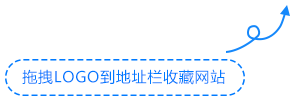在CSS的演进历程中,选择器和伪类已经从简单的样式匹配工具发展成为构建复杂交互逻辑的强大武器。本文将深入探索现代CSS选择器的前沿应用,通过实际案例展示如何仅用CSS实现以往需要JavaScript才能完成的交互效果。
一、CSS选择器系统深度解析
1.1 属性选择器的进阶应用
属性选择器不仅能匹配简单的属性存在,还能进行复杂的模式匹配:
/* 匹配特定属性值的元素 */
input[type="email"] {
border-color: #4299e1;
background-image: url('email-icon.svg');
}
/* 匹配属性值包含特定字符串 */
a[href*="download"]::after {
content: " ⬇️";
font-size: 0.8em;
}
/* 匹配属性值以特定字符串开头 */
a[href^="https://api"] {
background-color: #f0fff4;
border-left: 3px solid #48bb78;
}
/* 匹配属性值以特定字符串结尾 */
a[href$=".pdf"]::before {
content: "📄 ";
}
/* 匹配属性值用空格分隔的列表 */
div[class~="featured"] {
box-shadow: 0 4px 12px rgba(0, 0, 0, 0.15);
}
/* 匹配属性值连字符分隔的字符串 */
[lang|="zh"] {
font-family: "PingFang SC", "Microsoft YaHei", sans-serif;
}1.2 组合选择器的策略性使用
通过选择器组合创建精确的样式定位:
/* 相邻兄弟选择器 - 紧跟在h2后的段落 */
h2 + p {
font-size: 1.1em;
color: #4a5568;
margin-top: -0.5em;
}
/* 通用兄弟选择器 - h2后面的所有段落 */
h2 ~ p {
line-height: 1.6;
}
/* 子选择器 - 只影响直接子元素 */
.nav > .menu-item {
padding: 12px 16px;
}
/* 后代选择器 - 影响所有后代元素 */
.card :is(h1, h2, h3) {
color: #2d3748;
margin-bottom: 0.5em;
}
/* 列选择器 - 表格列样式 */
table.colgroup col:nth-child(2n) {
background-color: #f7fafc;
}二、现代伪类选择器实战
2.1 用户交互伪类深度应用
超越基础的:hover,探索更丰富的交互反馈:
/* 焦点管理的高级技巧 */
input:focus {
outline: 2px solid #4299e1;
outline-offset: 2px;
}
/* 焦点在表单内时的表单容器样式 */
.form-group:focus-within {
border-color: #4299e1;
background-color: #f0f9ff;
}
/* 无效输入的实时验证反馈 */
input:invalid:not(:focus):not(:placeholder-shown) {
border-color: #e53e3e;
background-color: #fff5f5;
}
input:valid:not(:focus):not(:placeholder-shown) {
border-color: #38a169;
background-color: #f0fff4;
}
/* 目标伪类创建单页面应用效果 */
.section {
opacity: 0.6;
transition: opacity 0.3s ease;
}
.section:target {
opacity: 1;
animation: highlight 1s ease;
}2.2 结构伪类的创造性使用
利用文档结构实现智能样式应用:
/* 创建斑马纹表格的现代方法 */
.table-row:nth-child(2n) {
background-color: #f8fafc;
}
/* 第一个和最后一个元素的特殊处理 */
.card:first-of-type {
border-top-left-radius: 12px;
border-top-right-radius: 12px;
}
.card:last-of-type {
border-bottom-left-radius: 12px;
border-bottom-right-radius: 12px;
}
/* 唯一子元素的特殊样式 */
.widget:only-child {
grid-column: 1 / -1;
text-align: center;
}
/* 空状态的优雅处理 */
.empty-state:empty::before {
content: "暂无数据";
display: block;
text-align: center;
color: #a0aec0;
padding: 40px;
}
/* 基于位置的智能样式 */
li:nth-last-child(3) {
border-bottom: 2px solid #e2e8f0;
}三、CSS逻辑组合选择器
3.1 :is() 和 :where() 选择器
使用现代选择器简化复杂的选择器组合:
/* 传统方式 - 冗长的选择器列表 */
.header h1,
.header h2,
.header h3,
.header h4 {
margin-bottom: 0.5em;
}
/* 现代方式 - 使用:is() */
.header :is(h1, h2, h3, h4) {
margin-bottom: 0.5em;
}
/* :where() 的特定性优势 */
.card :where(h1, h2, h3) {
color: inherit; /* 特异性为0,易于覆盖 */
}
/* 复杂嵌套场景的简化 */
article :is(header, footer) :is(h1, h2, h3, h4) {
text-transform: uppercase;
}
/* 表单元素的统一处理 */
form :is(input[type="text"],
input[type="email"],
input[type="password"],
textarea) {
border: 1px solid #e2e8f0;
border-radius: 6px;
padding: 8px 12px;
}3.2 :has() 选择器 – CSS的革命性特性
父元素选择器的强大应用场景:
/* 根据子元素状态改变父元素样式 */
.card:has(.priority-high) {
border-left: 4px solid #e53e3e;
}
.card:has(.priority-medium) {
border-left: 4px solid #ed8936;
}
.card:has(.priority-low) {
border-left: 4px solid #38a169;
}
/* 表单组的智能验证反馈 */
.form-group:has(:invalid) {
background-color: #fff5f5;
}
.form-group:has(:valid) {
background-color: #f0fff4;
}
/* 根据内容动态调整布局 */
.grid:has(.featured-item) {
grid-template-columns: 2fr 1fr;
}
/* 空状态的连锁反应 */
.list:has(.list-item:only-child) {
justify-content: center;
text-align: center;
}
/* 交互状态的级联影响 */
.menu:has(.menu-item:hover) .menu-item:not(:hover) {
opacity: 0.6;
}四、状态与条件伪类实战
4.1 表单状态的高级管理
创建智能的表单验证和用户反馈系统:
/* 占位符显示时的特殊样式 */
input:placeholder-shown {
border-color: #cbd5e0;
background-color: #f7fafc;
}
/* 占位符隐藏时的样式(用户已输入) */
input:not(:placeholder-shown) {
border-color: #4299e1;
background-color: white;
}
/* 启用/禁用状态的差异设计 */
button:enabled {
cursor: pointer;
transition: all 0.2s ease;
}
button:disabled {
opacity: 0.6;
cursor: not-allowed;
transform: none;
}
/* 必填字段的视觉指示 */
input:required {
background-image: linear-gradient(45deg, transparent 95%, #e53e3e 95%);
background-size: 8px 8px;
}
/* 只读字段的特殊样式 */
input:read-only {
background-color: #edf2f7;
border-color: #e2e8f0;
color: #718096;
}4.2 媒体查询与容器查询的伪类结合
响应式设计与状态伪类的完美结合:
/* 暗色主题的智能适配 */
@media (prefers-color-scheme: dark) {
:root {
--bg-color: #1a202c;
--text-color: #e2e8f0;
}
.card:has(img) {
background: linear-gradient(135deg, #2d3748, #4a5568);
}
}
/* 减少动画用户的体验优化 */
@media (prefers-reduced-motion: reduce) {
* {
animation-duration: 0.01ms !important;
animation-iteration-count: 1 !important;
transition-duration: 0.01ms !important;
}
.card:hover {
transform: none;
}
}
/* 容器查询与伪类的结合 */
.component {
container-type: inline-size;
}
@container (min-width: 400px) {
.component:has(.sidebar) {
display: grid;
grid-template-columns: 200px 1fr;
}
}五、创造性交互效果实现
5.1 纯CSS交互组件
不使用JavaScript实现复杂的交互组件:
/* CSS-only 手风琴组件 */
.accordion-item {
border-bottom: 1px solid #e2e8f0;
}
.accordion-input {
display: none;
}
.accordion-label {
display: block;
padding: 16px;
cursor: pointer;
background-color: #f7fafc;
transition: background-color 0.2s ease;
}
.accordion-label:hover {
background-color: #edf2f7;
}
.accordion-content {
max-height: 0;
overflow: hidden;
transition: max-height 0.3s ease;
}
.accordion-input:checked + .accordion-label {
background-color: #4299e1;
color: white;
}
.accordion-input:checked + .accordion-label + .accordion-content {
max-height: 500px;
padding: 16px;
}
/* CSS-only 标签页组件 */
.tabs {
display: flex;
border-bottom: 1px solid #e2e8f0;
}
.tab-input {
display: none;
}
.tab-label {
padding: 12px 24px;
cursor: pointer;
border-bottom: 2px solid transparent;
}
.tab-panel {
display: none;
padding: 24px;
}
.tab-input:checked + .tab-label {
border-bottom-color: #4299e1;
color: #4299e1;
}
.tab-input:checked + .tab-label + .tab-panel {
display: block;
}5.2 高级悬停与焦点效果
创建引人入胜的微交互体验:
/* 立体悬停效果 */
.btn-3d {
background: linear-gradient(145deg, #4299e1, #3182ce);
border: none;
border-radius: 8px;
padding: 12px 24px;
color: white;
transform: translateY(0);
box-shadow: 0 4px 0 #2b6cb0,
0 6px 8px rgba(0, 0, 0, 0.15);
transition: all 0.2s ease;
}
.btn-3d:hover {
transform: translateY(-2px);
box-shadow: 0 6px 0 #2b6cb0,
0 8px 12px rgba(0, 0, 0, 0.2);
}
.btn-3d:active {
transform: translateY(2px);
box-shadow: 0 2px 0 #2b6cb0,
0 3px 4px rgba(0, 0, 0, 0.15);
}
/* 兄弟元素联动效果 */
.gallery {
display: grid;
grid-template-columns: repeat(auto-fit, minmax(200px, 1fr));
gap: 16px;
}
.gallery-item {
opacity: 0.7;
filter: grayscale(0.3);
transition: all 0.3s ease;
}
.gallery-item:hover {
opacity: 1;
filter: grayscale(0);
transform: scale(1.05);
z-index: 10;
}
.gallery:has(.gallery-item:hover) .gallery-item:not(:hover) {
opacity: 0.4;
filter: grayscale(0.8);
}六、性能优化与最佳实践
6.1 选择器性能优化策略
确保复杂选择器不会影响页面性能:
/* 高性能选择器模式 */
/* 好的做法 - 具体的选择器 */
.nav-primary .menu-item { }
/* 避免的做法 - 通用选择器 */
div ul li a { }
/* 使用类选择器替代标签选择器 */
.button-primary { } /* 快 */
button[type="submit"] { } /* 慢 */
/* 避免过度复杂的选择器 */
.card > .header > .title > span { } /* 过于复杂 */
.card-title { } /* 更高效 */
/* 利用浏览器优化 */
:is(.class1, .class2, .class3) { } /* 浏览器可以优化 */
/* 避免通用兄弟选择器的性能问题 */
div ~ span { } /* 在大型文档中可能较慢 */6.2 可维护的CSS架构
构建可扩展和易维护的选择器系统:
/* BEM命名约定与伪类结合 */
.button {
display: inline-block;
padding: 12px 24px;
border: none;
border-radius: 6px;
cursor: pointer;
}
.button--primary {
background-color: #4299e1;
color: white;
}
.button--primary:hover {
background-color: #3182ce;
}
.button--primary:focus {
outline: 2px solid #90cdf4;
outline-offset: 2px;
}
.button--primary:active {
transform: translateY(1px);
}
/* 工具类与状态结合 */
.is-hidden {
display: none !important;
}
.is-visible {
display: block;
}
.has-error {
border-color: #e53e3e;
background-color: #fff5f5;
}
.is-loading {
opacity: 0.7;
pointer-events: none;
}
.is-loading::after {
content: "加载中...";
display: inline-block;
margin-left: 8px;
}七、完整实战案例:智能数据表格
/* 智能数据表格的完整CSS实现 */
.data-table {
width: 100%;
border-collapse: collapse;
font-family: -apple-system, BlinkMacSystemFont, sans-serif;
}
/* 表头样式 */
.data-table thead {
background-color: #f7fafc;
border-bottom: 2px solid #e2e8f0;
}
.data-table th {
padding: 16px;
text-align: left;
font-weight: 600;
color: #4a5568;
position: relative;
}
/* 可排序表头 */
.data-table th[data-sortable]:hover {
background-color: #edf2f7;
cursor: pointer;
}
.data-table th[data-sortable]::after {
content: "↕";
margin-left: 8px;
opacity: 0.5;
}
.data-table th[data-sortable]:hover::after {
opacity: 1;
}
/* 表格行样式 */
.data-table tbody tr {
border-bottom: 1px solid #e2e8f0;
transition: background-color 0.2s ease;
}
.data-table tbody tr:hover {
background-color: #f0fff4;
}
.data-table td {
padding: 16px;
color: #2d3748;
}
/* 状态指示器 */
.status-cell[data-status="success"] {
color: #38a169;
font-weight: 500;
}
.status-cell[data-status="warning"] {
color: #dd6b20;
font-weight: 500;
}
.status-cell[data-status="error"] {
color: #e53e3e;
font-weight: 500;
}
.status-cell[data-status="success"]::before {
content: "✅ ";
}
.status-cell[data-status="warning"]::before {
content: "⚠️ ";
}
.status-cell[data-status="error"]::before {
content: "❌ ";
}
/* 空状态处理 */
.data-table:empty::before {
content: "暂无数据";
display: block;
text-align: center;
padding: 60px;
color: #a0aec0;
font-style: italic;
}
/* 响应式表格 */
@media (max-width: 768px) {
.data-table thead {
display: none;
}
.data-table tbody tr {
display: block;
margin-bottom: 16px;
border: 1px solid #e2e8f0;
border-radius: 8px;
}
.data-table td {
display: flex;
justify-content: space-between;
align-items: center;
padding: 12px 16px;
border-bottom: 1px solid #f7fafc;
}
.data-table td:last-child {
border-bottom: none;
}
.data-table td::before {
content: attr(data-label);
font-weight: 600;
color: #4a5568;
margin-right: 16px;
}
}
/* 斑马纹效果增强 */
.data-table tbody tr:nth-child(even) {
background-color: #fafafa;
}
.data-table tbody tr:nth-child(even):hover {
background-color: #f0fff4;
}
/* 高亮重要行 */
.data-table tbody tr[data-priority="high"] {
border-left: 4px solid #e53e3e;
}
.data-table tbody tr[data-priority="medium"] {
border-left: 4px solid #ed8936;
}
.data-table tbody tr[data-priority="low"] {
border-left: 4px solid #38a169;
}总结
通过本文的深度探索,我们掌握了:
- 现代CSS选择器的完整体系和应用场景
- :has()选择器的革命性能力及其实际应用
- 伪类在用户交互和状态管理中的高级用法
- 纯CSS实现复杂交互组件的技术方案
- 选择器性能优化和维护性最佳实践
现代CSS选择器已经发展成为强大的编程工具,能够处理复杂的逻辑和交互需求。掌握这些技术将极大提升你的CSS技能水平,让你能够创建更加智能、响应式的用户界面。
核心要点回顾
- :has()选择器开启了CSS父元素选择的新时代
- :is()和:where()极大简化了复杂选择器的编写
- 属性选择器提供了强大的模式匹配能力
- 状态伪类可以创建丰富的用户反馈系统
- 合理的选择器架构对性能和可维护性至关重要





